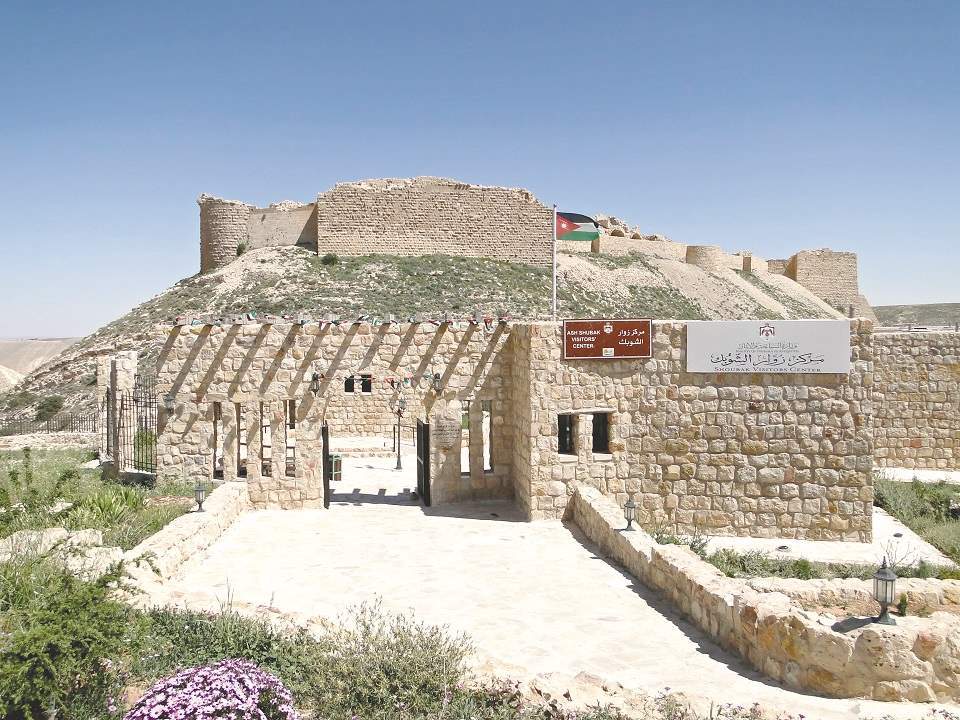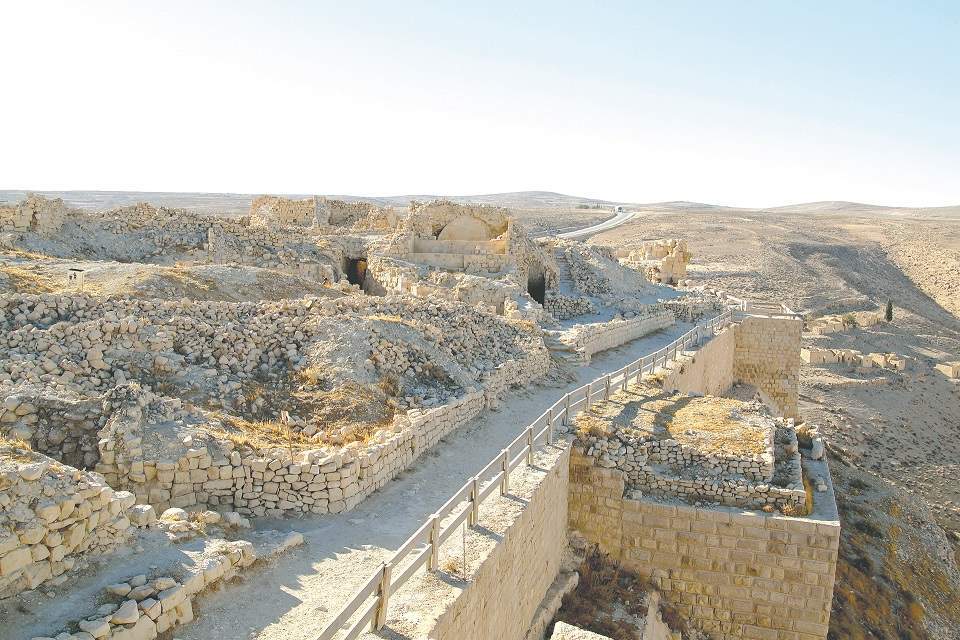AMMAN – Shobak Castle,
the oldest Crusader castle in Jordan, is best-known for its natural camouflaged
appearance and unique structures.
اضافة اعلان
Benefitting from its proximity to Petra, Jordan's most visited
site, Shobak Castle is listed on most of the itineraries of tourists coming to
Jordan.
The castle was built
by King Baldwin I in if Jerusalem in 1115 AD during his expedition to east
Jordan.
The
castle was originally called Krak de Montreal or Mons
Regalis, which translates to 'the castle of kings' or 'the royal mountain'.
 interior of crusader castle Shobak (Photo: Shutterstock)
interior of crusader castle Shobak (Photo: Shutterstock)
The purpose of building it was to defend the Kingdom of
Jerusalem's eastern frontiers and control the trade and military route between
Syria and Egypt.
It was captured in 1189 AD by the armies of Saladin, the founder
of the Ayyubid Dynasty, after several attacks and lengthy sieges.
According to historians, Saladin realized the strategic location
of the castle between Egypt and Syria, the most important countries in the
region back.
Therefore, he thought of taking the castle as early as 1167 AD,
launching his first military campaign against it i 1171 AD.
In 1177 AD, Raynald de Châtillon became the governor of Kerak
and Shobak and started attacking traders and pilgrims caravans and threatened
to attack Mecca.
Winning the battle of Hattin in 1187 AD, Saladin imposed a
2-year siege that resulted in taking the castle and ending the crusaders'
presence in Transjordan.
The fortress was struck by an earthquake in 1211 AD, which
destroyed most of it and killed many people.
During the Mameluke
period, Shobak Castle was rebuilt and several structures were added.
Meanwhile, starting
from 1516 AD (Ottoman era) Shobak was neglected and even deliberately destroyed
by an Ottoman Pasha in 1860.
Shobak Castle is
smaller and less complete than its sister to the north (Kerak Castle), which
was built later in 1142 AD to become the seat of Transjordan's governor
appointed by the king of Jerusalem.
For castles enthusiasts, however, Shobak Castle is distinctive
for its unique location and diverse history.
Unlike other castles, Shobak is not easy to recognize even from
a short distance for the camouflage provided by the many pointed hills
surrounding it and its walls that were built from the local rocks.
 Montreal Castle and the Shobak visitor Center (Photo: Wikipedia)
Montreal Castle and the Shobak visitor Center (Photo: Wikipedia)
The castle is usually approached by a short uphill walk from
visitor center.
The castle is famous for the Arabic calligraphy inscribed round
its watch towers, which dates back to the 13th century.
Entering the castle, visitors can see structures that represent
all dynasties that occupied it, including churches, water wells and pottery
pipes, and baths.
 Ruins of the Shobak Castle in Jordan (Photo: Shutterstock)
Ruins of the Shobak Castle in Jordan (Photo: Shutterstock)
Among the major attractions inside the castle is one of its
secret tunnels, which has stairs that lead down to the bottom of the hill (on
which the castle stands) for around 150 meters, ending at a water spring.
Perhaps that was the very reason why the castle withstood
Saladin's seige for two years.
The castle has two churches that are part of the original
construction by the crusaders.
Among the Mameluke additions is the school, thought to have been
used for teaching Quran.
The view from fortress includes small desert villages, valleys
and hills with distinctive rock formations.
In the adjacent valley to the north,
visitors can see
water-powered mills that used for grain grinding, a tangible evidence that area
was fertile back in the time.
Therefore, it is not strange that Shobak region nowadays
provides a large portion of Jordan's apples.
Read more Lifestyle



